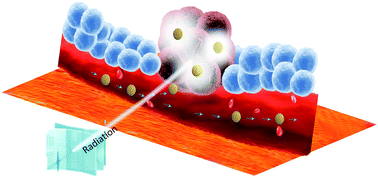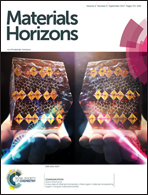Engineering gold-based radiosensitizers for cancer radiotherapy
Abstract
Radiotherapy remains a major modality in cancer therapy. The main goal of radiotherapy is to shrink tumors and kill cancer cells by using high-energy radiation, such as X-rays and γ-rays. Despite the effectiveness of radiotherapy in treating cancer in many possible ways, harmful damage caused by such radiation to the surrounding healthy/normal cells is often unavoidable. Therefore, it would be desirable to strike the right balance between tumor eradication and minimizing the possible side effects. To address this challenge, a magic bullet is the “radiosensitizer”, which can make cancer cells more sensitive to radiation by increasing the local treatment efficiency using a relatively low and safe radiation dose. This review article focuses on the recent progress in the area of radiosensitizers, especially gold-based materials. It begins with the key factors associated with radio-biological interactions along with the possible biological effects upon irradiation and from which the idea of radiosensitizers is derived. The prospect of gold-based materials as radiosensitizers is summarized through the mechanistic elucidation of the interaction of radiation with gold. Following that, some of the key design strategies for generating ideal gold-based radiosensitizers are highlighted. Examples of gold-based materials derived from these strategies, such as gold nanoparticles and nanoclusters, and their applications in radiotherapy are presented and discussed. The final part of this review article focuses on the avenues for future research on engineering gold-based nanomaterials for cancer radiotherapy.

- This article is part of the themed collection: Recent Review Articles


 Please wait while we load your content...
Please wait while we load your content...